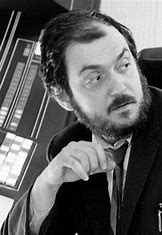Introduction: Who was Ernst Lubitsch?
Ernst Lubitsch was a German-American film director, producer, and screenwriter who was active in Hollywood during the silent and sound eras. He was known for his sophisticated comedies and his unique directorial style, which was often referred to as the “Lubitsch touch.” Lubitsch was a prolific filmmaker, having directed over 70 films in his career, and he was widely regarded as one of the most influential directors of his time.
Early Life and Career

Ernst Lubitsch was born in Berlin, Germany in 1892. He began his career in the film industry as an actor and a comedian, and he quickly rose through the ranks to become a director. He made his directorial debut in 1914 with the film “The Eyes of the Mummy,” which was a critical and commercial success. Lubitsch went on to direct a number of successful films in Germany, including “Madame DuBarry” and “Anna Boleyn.”
In the early 1920s, Lubitsch was invited to Hollywood by the producer Mary Pickford, and he quickly established himself as one of the most talented directors in the industry. He directed a number of successful films for Paramount Pictures, including “The Marriage Circle” and “Trouble in Paradise.” His films were known for their sophisticated humor and their elegant visual style, and they were hugely popular with audiences and critics alike.
The Lubitsch Touch
The “Lubitsch touch” was a term coined by critics to describe Lubitsch’s unique directorial style. It referred to his ability to infuse his films with a sense of sophistication and elegance, as well as his skill at using subtle visual cues to convey emotion and meaning. Lubitsch was known for his use of visual metaphors and his ability to suggest rather than show, and he was a master of the art of suggestion.
Lubitsch’s films were also notable for their use of music and sound. He was one of the first directors to use synchronized sound in his films, and he was known for his use of music to enhance the emotional impact of his scenes. His films often featured elaborate musical numbers and dance sequences, which were choreographed with great care and precision.
Legacy
Ernst Lubitsch’s influence on the film industry cannot be overstated. His films were hugely popular during his lifetime, and they continue to be celebrated today for their wit, sophistication, and visual style. Many of his films have been preserved by the Criterion Collection, and they are considered classics of the silent and sound eras. Lubitsch’s legacy can be seen in the work of many contemporary filmmakers, who continue to be inspired by his unique directorial style and his ability to infuse his films with a sense of elegance and sophistication.
Conclusion
Ernst Lubitsch was a true master of the art of filmmaking. His unique directorial style and his ability to infuse his films with a sense of sophistication and elegance have made him one of the most influential directors of his time. His films continue to be celebrated today for their wit, charm, and visual style, and his legacy lives on in the work of many contemporary filmmakers.
FAQ
Who is Ernst Lubitsch?
Ernst Lubitsch was a German-American film director, producer, and screenwriter. He was known for his sophisticated and witty comedies, which earned him the nickname “the master of the musical comedy.”
What are some of Ernst Lubitsch’s most famous movies?
Some of Ernst Lubitsch’s most famous movies include “To Be or Not to Be,” “Ninotchka,” “The Shop Around the Corner,” and “Trouble in Paradise.”
What was Ernst Lubitsch’s filmmaking style?
Ernst Lubitsch’s filmmaking style was characterized by his use of subtle humor, sophisticated dialogue, and visual storytelling. He was known for his ability to convey complex emotions and ideas through simple gestures and facial expressions.
What is Ernst Lubitsch’s legacy?
Ernst Lubitsch’s legacy is his contribution to the development of the Hollywood film industry. He was one of the first directors to bring a European sensibility to American cinema, and his influence can be seen in the work of many filmmakers who came after him.



